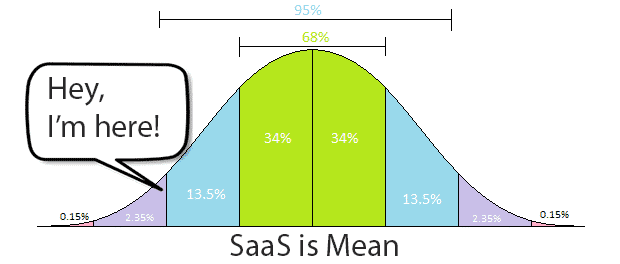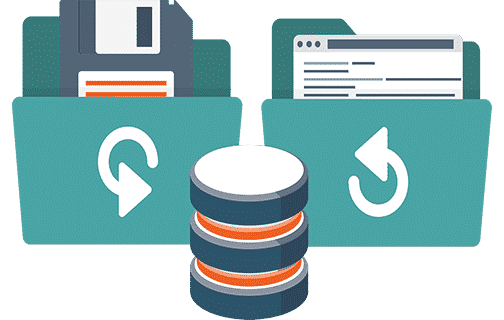Many companies turn to Mautic in search of a more cost-effective way to enable their organizations for the future.
Since Mautic is free to download, yeiii! One could think running it at scale could be done for free too, however, Mautic is quite a complex piece of software, and depending on your requirements, it will also need some decent hardware to run on top of.
In this post, I’ll give you details about the costs involved and how to source what you need.
When you use a SaaS service like Hubspot, Eloqua, Pardot, etc. you get a whole lot of services in one package, the software itself is just a fraction of the total cost, hence when you use the free, self-hosted version of Mautic, you have to source all these other services, either in-house or externally. SaaS marketing automation providers add a lot of value to their software offerings in the form of complete, end to end solutions. This can be expensive to produce and even more expensive to buy, and that’s also why some companies turn to Mautic, but before we start looking at the $$$ numbers, let’s see what’s needed exactly in order to run and maintain a production-ready Mautic Installation as similar as possible to what SaaS vendors offer.
In order to set up your Mautic Installation and keep it running healthy forever, you’re gonna need a mix of the following products and services:
INFRASTRUCTURE
- Hardware (CPU, RAM and Storage)
- Networking and Internet connectivity
SOFTWARE
- Marketing Automation Software
- OS and Service stack (HTTP server, MySQL DB, PHP Interpreter)
ENGINEERING
- Stack Installation
- Stack optimization (Fine tuning services for Mautic usage)
- Mautic installation
- Plugins and other integration requirements
- Server security
- Server, Stack and Mautic maintenance
- Advanced customization
SERVICES
- Email, SMS and other external services
- Onboarding and initial personalization
- Training
The good thing is, with Mautic, you can choose whether to source those in-house, externally or not at all, you are not forced to buy everything at once and pay it upfront as a yearly fee, you can source these whenever it suits your company’s needs.
Let’s see these in detail…
Mautic infrastructure requirements
Cost of infrastructure is really low nowadays, however as your Mautic Installation grows, you will start needing more and better infrastructure for Mautic.
- Hardware (CPU, RAM and Storage)
- Networking and Internet connectivity
This is probably the simplest need to source, you can cover all your Infrastructure needs by just getting a cloud VPS from any reputed provider. Any VPS from a reputed cloud will give you all you need to get started, VPSs are quite cheap nowadays, and the best part, you can upgrade them with a few clicks whenever you need more powerful hardware.
One big advantage of using Mautic self Hosted is that you can choose your infrastructure provider, You can host your Mautic server with the big companies like Amazon, Google, Microsoft, you can choose more competitive offerings, like Digital Ocean or you can even host it in your own in-house server rack.
Another great advantage is that you can choose as well the location of your server(s). Most SaaS companies will have one central location where their servers and software reside, you can’t choose at all. Some of the bigger brands will provide you with a choice of 2/3 different locations, that’s it!. With Mautic self-hosted you can locate your Marketing Automation where your customers really are.
Mautic software requirements
- Marketing Automation Software (Mautic itself)
This is one of the most popular reasons why many of us choose Mautic, the software is free, and that goes much beyond simply being free to download, the Mautic license gives you full freedom to do with the software as you please. Mautic is free to copy, free to modify, you can extend it, you can distribute it, what the heck! you can even sell it if you wish to do so.
- OS and service stack (HTTP server, MySQL DB, PHP Interpreter)
Here things get more complex, to run Mautic you need lots of other software, some are powerful core APPs like the webserver and the database or the PHP interpreter, you’re also gonna need a wisely selected mix of caching solutions and tons of glue (smaller pieces of software that help connect all these parts).
Good news is, If you opt to use Linux as your Operating System, you can get all these software tools for free too, however, you’re gonna need someone to put all those pieces together.
Mautic engineering requirements
- Stack Installation
- Mautic installation
- Plugins and other connectivity requirements
- Server security
- Stack optimization (Fine tuning services for heavy Mautic usage)
- Server, Stack and Mautic maintenance
- Advanced customization
Sadly this is where Mautic stops being free, having expert IT pros at your disposal is a huge advantage and things will be easier for you if you are, or you have a SysAdmin or a DevOps engineer in your team. He or she might be able to take care of a great deal of the engineering requirements. But even if you have the team and the knowledge, you need a Mautic specialist to do or oversee this for you. I recommend you to hire someone to guide you and make sure everything is perfectly on track and future proof.
If you don’t have the tech team nor the knowledge, just hire someone, there are plenty of freelancers you can hire online.
- Stack Installation:
In general, you don’t need a Mautic specialist to install the underlying stack, but this is the cornerstone of your Future Marketing Automation platform, so you shouldn’t fall short here or it might cost you down the road.
Basic installations with no special requirements and, let’s say up to about 20K contacts or so, are relatively simple, if you have the skills and the knowledge, there’s not a lot of magic required to complete such deployments. OS will get installed by your cloud provider automatically when you purchase your VPS and all the other required software can be installed by any good Linux server administrator.
More demanding installations, let’s say around 100K contacts need a lot more tweaking but have basically the same needs as the simple ones, one alternative to having a perfectly optimized stack is to just add more powerful hardware, it’s not a good approach because it will cost you more over time, but you can do it. However, if you have such a large list, you probably don’t want to risk the troubles inherent to DIY installations.
- Mautic installation, plugins and other connectivity requirements:
This step is so crucial! Still not rocket science, but this is not about being a good SysAdmin anymore, here the secret lies in the little details, lot’s of them btw, which differentiate a troublesome Mautic installation from a smoothly running one.
Only a seasoned Mautic expert will give you a worry-free Mautic installation. A good SysAdmin will certainly get there without having any previous contact with Mautic, however, it will be through trial and error, which means your new Mautic installation will run into minor issues here and there until your SysAdmin learns all the tricks.
Official plugins are, in general, not very troublesome, but if you want to use a third party plugin (not provided by Mautic itself) you might need to have a PHP developer at hand.
Most plugins involve connecting Mautic to other software or cloud services, for those you will need someone with knowledge about both, Mautic AND the other software you want to connect to. Some are very simple to setup, some can get very complicated. - Server security:
Mautic is quite secure for a PHP APP, security is implemented just as in any other internet facing application. While using a Mautic expert might help a bit, any Linux administrator with good security skills will do as good as a job as anyone else. - Stack optimization (Fine tuning services for Mautic usage)
Smaller Mautic installations don’t need a lot of optimization, but once you get near the 250K contacts mark, it starts to make a lot of sense to get a Mautic specialist to set everything up for you from the beginning, someone that can optimize your stack, she or he will save you some infrastructure costs, prevent some common pitfalls and overall make sure your software runs smoothly and you don’t suffer any service shortages, a specialist will also take care of server security, backups, basic maintenance automation, etc.
As you get closer to the 500k contacts, the risk of having any trouble is simply not worth it, the more contacts you have and the more Mautic features you use intensively, the more fine-tuned everything needs to be. A good Systems Engineer with solid Mautic expertise can grow your Mautic installation to several million contacts.
In my experience, one crucial mark seems to be about 2MM contacts, at this point just throwing more hardware at Mautic seems to stop working completely and very detailed optimization of all the software underlying a Mautic, including the smaller bits of such deployments is a must.
I frequently get hired for fixing existing Mautic deployments that were installed in-house by the company’s “developer”, sometimes these installs work for a while, until they don’t anymore, here’s what I’ve learned from rescuing those clients from stalled Mautic deployments: It’s quite important to understand the differences and task the right person for each job.
Beware this important pitfall: Your “web developer” might or might not have the necessary skills.
About developers vs DevOps: What is commonly called a “developer”, can be anything from a web designer with zero knowledge about IT infrastructure beyond the usage of an FTP tool, to a good PHP programmer, also with little knowledge about Systems Engineering to a well trained DevOps engineer with a good knowledge of cloud infrastructure, make sure you understand the difference and match your needs to the right type of “developer” for your needs.
About DevOps vs SysAdmins:
– A Linux Systems Engineer (SysAdmin) is an expert in, among many other things, the full Linux web stack and how to setup and optimize the required software to run services (webserver, database, etc.) on Linux.
– A Software Engineer (Programmer) is an expert in architecting and building software (APPs).
– A DevOps Engineer is (usually) either a SysAdmin with programming skills or a Programmer with experience integrating cloud services into his software. This is a relatively new role, born after the cloud, his or her expertise is about how to integrate cloud computing into software apps, this is not the same as optimizing the underlying software. Either a SysAdmin or a Systems geared DevOps is what you really need for deploying Mautic.
– DBA (Database Administrators) Are SysAdmins specializing in database deployment, maintenance and optimization, you won’t need its services until your database grows really big, but if you plan to grow your Mautic deployment over the million contacts or have intensive website tracking needs, then you will need a DBA.
- Server, Stack and Mautic maintenance:
Server and stack maintenance is relatively easy and any serious IT guy will be able to handle it, my recommendation, give server and maintenance tasks to your security SysAdmin, he’s probably the best person to give this tasks to.
Mautic Maintenance, on the other hand, is a completely different story and here’s where a PHP programmer will be most useful. Keeping Mautic up to date and in good health requires an understanding of Mautic’s underlying code structure, mostly provided by the Symfony PHP framework and managed by Composer. Good knowledge of this particular development stack is a must! - Advanced customization:
One of the biggest advantages of using Mautic self-hosted is the freedom to do with it whatever you need. That’s a unique advantage only Mautic can give you when compared to all the other marketing automation software out there.
Most of the smaller companies just use Mautic as provided, never tailoring the code to their needs; on the other hand, bigger organizations, with more specific needs and more resources, are usually more interested in customizing, modifying or extending Mautic.
If you want to seriously improve your own copy of Mautic, you will need a PHP developer with a Symphony background. Mautic codebase evolves continuously and quite rapidly, while any good PHP programmer will be able to do this for you, I STRONGLY recommended you to hire a programmer with solid prior Mautic experience, you can find them on Mautic’s Slack channel, the Mautic support forums and on Github.
Mautic services requirements
- Email, SMS and other external services
You will need one or more external services, setting those up vary in difficulty from simple to slightly complex, for the most part, anyone with decent IT knowledge will be able to configure these services, however, a few exceptions, like Amazon SES, will require a deeper understanding of how cloud services work.
- Onboarding and initial personalization
After you have Mautic properly installed and any extra plugins correctly configured, it is ready for marketers to start using it. Onboarding can be as simple or as complex as your organization needs, if your entire, medium-sized marketing team is going to rely heavily upon Mautic, you better get them trained about how to operate Mautic. It’s relatively simple to understand how Mautic works at the user level, however, a quick onboarding can save your marketers a lot of headaches, because as simple as it is, it works quite differently from most other marketing automation tools. Once your users get the handle of it, it’s very powerful and intuitive.
A small deal of personalization or configuration will be needed after your Mautic deployment is completed, for the most part, it’s quite intuitive, but as always, having a Mautic expert on-board it will make everyone’s life a lot easier. - Training
For the most part, if your marketing team already knows what marketing automation is and how to leverage it for maximum productivity and profit, you don’t really need much more extra training. Mautic abides by the general rules of inbound marketing, content marketing and marketing in general. However, if you want your team to be able to squeeze as much value as possible out of your marketing team, you might consider hiring a marketing strategist with a serious focus on marketing automation, omnichannel marketing, account-based marketing and whatever new strategies and tactics give your team an edge over the competition. you don’t specifically need a Mautic specialist for this, but if you can find (very rare) a good marketing strategist with Mautic experience, it can help a faster time to implementation and faster results.
Always have a map for your journey
Proper planning will ALWAYS save you money and lots of headaches. Take the time to do your homework, use this post as a checklist and make sure to tick all the boxes!
Hiring expert Mautic help is very much recommended, involvement can be as light as an external consultant to guide your internal IT department, or as heavy as completely outsourcing the entire Mautic deployment.
Conclusion and Takeaways
Most of the required software needed to run Mautic is free and sourcing the required hardware is a no brainer.
Mautic installations range from very low requirements to seriously complex. Make sure you understand the requirements and the costs; and make sure to allocate the necessary talent, be it in-house or externally.
You will need a good sysadmin in your team to deploy Mautic. If you don’t have a real sysadmin, hire one.
Hiring an external “Mautic expert” is only required for medium and big deployments, however, it’s usually worth in all cases, even smaller installations. Personally, I had to repair or rebuild many Mautic installations because the task of deploying Mautic was given to “the developer that makes our website”, it always ends costing a lot more than if they had hired someone qualified in the first place.
After Mautic is deployed, once Mautic is running, you might need a PHP programmer to run updates and troubleshoot issues and bugs found in new releases.
Take your time to evaluate the costs, pros and cons of using Mautic as your marketing automation platform before you embark on that journey.
In an upcoming post, I will detail what all this means in hard cash for companies of different sizes and needs, stay tuned!
My name is Yosu Cadilla, a Systems Analyst and Platform Engineer for mktg.dev
I discovered Mautic in 2017 and since have specialized in:
– Running Mautic for Marketing Agencies.
– Running large Mautic instances, sometimes with millions of contacts.
– Helping companies build and optimize their (usually Mautic) runtime infrastructure.
If you are planning on deploying Mautic for your Marketing Agency, or you have a large Mautic Instance…
Let’s have a chat! yosu.cadilla@gmail.com



